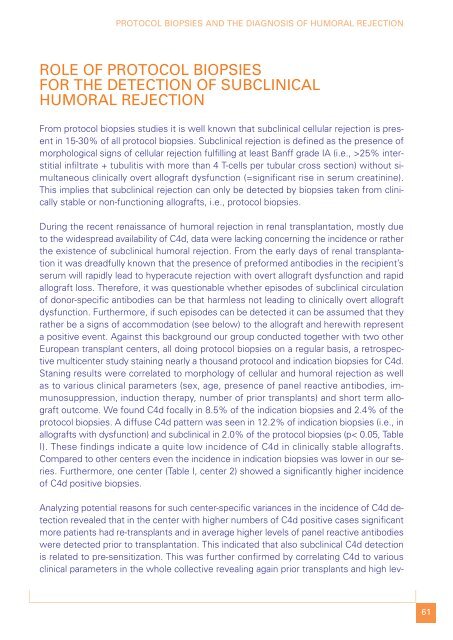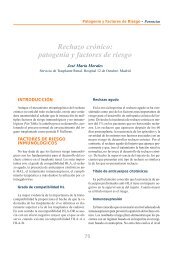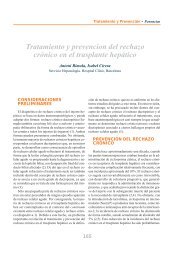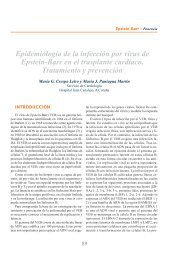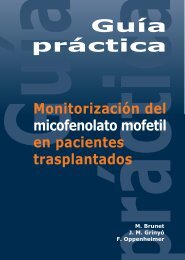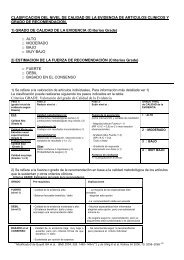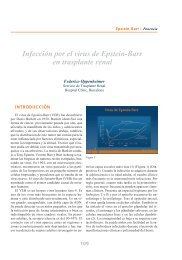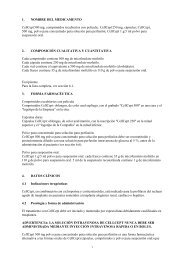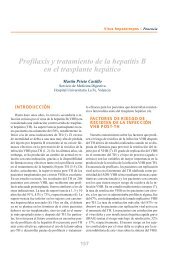Untitled - Roche Trasplantes
Untitled - Roche Trasplantes
Untitled - Roche Trasplantes
You also want an ePaper? Increase the reach of your titles
YUMPU automatically turns print PDFs into web optimized ePapers that Google loves.
PROTOCOL BIOPSIES AND THE DIAGNOSIS OF HUMORAL REJECTION<br />
ROLE OF PROTOCOL BIOPSIES<br />
FOR THE DETECTION OF SUBCLINICAL<br />
HUMORAL REJECTION<br />
From protocol biopsies studies it is well known that subclinical cellular rejection is present<br />
in 15-30% of all protocol biopsies. Subclinical rejection is defined as the presence of<br />
morphological signs of cellular rejection fulfilling at least Banff grade IA (i.e., >25% interstitial<br />
infiltrate + tubulitis with more than 4 T-cells per tubular cross section) without simultaneous<br />
clinically overt allograft dysfunction (=significant rise in serum creatinine).<br />
This implies that subclinical rejection can only be detected by biopsies taken from clinically<br />
stable or non-functioning allografts, i.e., protocol biopsies.<br />
During the recent renaissance of humoral rejection in renal transplantation, mostly due<br />
to the widespread availability of C4d, data were lacking concerning the incidence or rather<br />
the existence of subclinical humoral rejection. From the early days of renal transplantation<br />
it was dreadfully known that the presence of preformed antibodies in the recipient’s<br />
serum will rapidly lead to hyperacute rejection with overt allograft dysfunction and rapid<br />
allograft loss. Therefore, it was questionable whether episodes of subclinical circulation<br />
of donor-specific antibodies can be that harmless not leading to clinically overt allograft<br />
dysfunction. Furthermore, if such episodes can be detected it can be assumed that they<br />
rather be a signs of accommodation (see below) to the allograft and herewith represent<br />
a positive event. Against this background our group conducted together with two other<br />
European transplant centers, all doing protocol biopsies on a regular basis, a retrospective<br />
multicenter study staining nearly a thousand protocol and indication biopsies for C4d.<br />
Staning results were correlated to morphology of cellular and humoral rejection as well<br />
as to various clinical parameters (sex, age, presence of panel reactive antibodies, immunosuppression,<br />
induction therapy, number of prior transplants) and short term allograft<br />
outcome. We found C4d focally in 8.5% of the indication biopsies and 2.4% of the<br />
protocol biopsies. A diffuse C4d pattern was seen in 12.2% of indication biopsies (i.e., in<br />
allografts with dysfunction) and subclinical in 2.0% of the protocol biopsies (p< 0.05, Table<br />
I). These findings indicate a quite low incidence of C4d in clinically stable allografts.<br />
Compared to other centers even the incidence in indication biopsies was lower in our series.<br />
Furthermore, one center (Table I, center 2) showed a significantly higher incidence<br />
of C4d positive biopsies.<br />
Analyzing potential reasons for such center-specific variances in the incidence of C4d detection<br />
revealed that in the center with higher numbers of C4d positive cases significant<br />
more patients had re-transplants and in average higher levels of panel reactive antibodies<br />
were detected prior to transplantation. This indicated that also subclinical C4d detection<br />
is related to pre-sensitization. This was further confirmed by correlating C4d to various<br />
clinical parameters in the whole collective revealing again prior transplants and high lev-<br />
61


